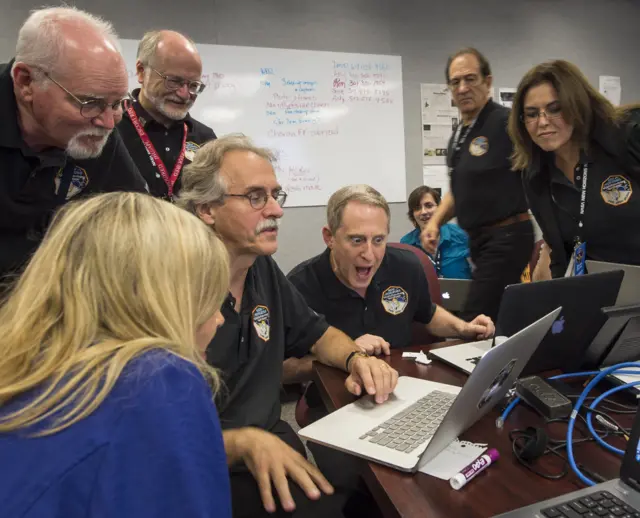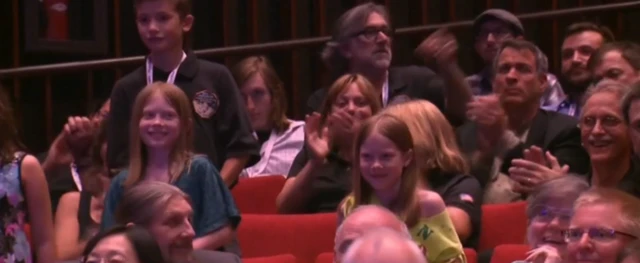Postpublished at 19:14 BST 15 July 2015
Now the Twittersphere is having fun with that photo of principal investigator Prof Alan Stern...
Allow X content?
This article contains content provided by X. We ask for your permission before anything is loaded, as they may be using cookies and other technologies. You may want to read X’s cookie policy, external and privacy policy, external before accepting. To view this content choose ‘accept and continue’.



